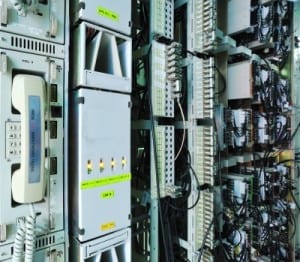Jeremy Murtishaw, Inc. offers data center and IT infrastructure assessment services that cover everything from data center operations to enterprise technology, from global network systems to critical IT systems. Our team of professionals has in-depth experience building and managing  global data center and IT systems. Jeremy Murtishaw, Inc.’s assessment services are objective and flexible.
global data center and IT systems. Jeremy Murtishaw, Inc.’s assessment services are objective and flexible.
Data Center and IT Infrastructure Current State Functional Assessment
We help clients that have experienced unplanned downtime and haven’t been able to identify the root cause of their downtime. Our team supports clients who have telecom or call center systems reaching the end of their life cycles by performing a vendor assessment, creating a replacement strategy and assisting with the implementation. Jeremy Murtishaw, Inc. helps you improve service and reduce costs, in addition to finding solutions when a key vendor is under-performing.
Jeremy Murtishaw, Inc.’s objective expertise helps our clients address any IT infrastructure issues, and develop superior solutions. The current state assessment will produce an independent, expert audit and view of the strengths, weaknesses, opportunities, and threats relating to your data center and IT infrastructure.
Data Center and IT Infrastructure Cost Baseline
In this economy, understanding the costs required for data center and IT services is critical. With costs increasing in many areas of the IT supply chain, getting your arms around all costs, their rates of change, and their impact on service levels is essential. Jeremy Murtishaw, Inc. will also help identify ways to mitigate costs by leveraging green technologies throughout the data center.
Understanding how to reduce costs and improve service levels can differentiate IT for its business value. We help you gather, organize, and establish an accurate view of all costs associated with data centers, IT infrastructure, and IT services.
- Electric Power
- Sometimes costs are difficult to identify or are hidden to the IT organization and electrical power is a classic example. Electric power rates are steadily increasing nationwide, with some geographic areas less expensive than others. Understanding power costs, where & why power is consumed, is critical. This information can be used to improve power efficiencies, reduce waste, and reduce costs. Harnessing green technologies such as solar or wind power generation can provide a significant reduction in your electrical power costs and potentially become a source of revenue with excess power being feed back into the grid.
- Storage
- Storage consumption is growing rapidly. Storage costs are decreasing, but organizations often don’t know how much they are investing in tiered storage. Our expert storage team helps clients gather and assess the information necessary to create a detailed view of storage use and costs to improve operating efficiencies and service levels.
- Network and Telephony
- The cost of supporting network and telephony communications have proven to be a significant part of IT budgets. Organizations often don’t understand the fully-loaded costs of telecommunications infrastructure or don’t compare utilization levels of systems inventory to costs. Your company may be leaking profits in these areas. Our engineers assesses utilization levels to ensure that our clients are maximizing their telecom investments.
The cost baseline gives clients a detailed, objective view of costs by service, service level, category, and vendor. This will position decision analysis to identify cost savings and service improvement opportunities, yielding superior telecom cost management.
Data Center and IT Infrastructure Benchmark
Benchmarking service levels, costs, and vendor performance periodically is critical rationalizing your IT expenditures as well as establishing best-in-class performance for any IT organization. Our experienced consulting team uses this benchmark database to create a customized decision-analysis that aids your company in budget planning, cost reductions and/or roadmap planning.
Benchmarking requires a detailed and accurate baseline of current data center and IT infrastructure costs. Through research and interviews, the project leader works to understand the operations, service levels, and context of the client’s data center and IT infrastructure. Once an accurate view of the current costs and services levels is aligned, the benchmark process will start. Typically, a benchmark project can be completed in less than 30 days.
A benchmark of data center and IT infrastructure can specifically reveal the variance between a client’s current state and best-in-class costs. Depending on the outcome, IT organizations may decide on a number of different options including process re-engineering, competitive sourcing, vendor negotiations, and technology migration.
Data Center and IT Infrastructure Optimization
Our expert consultants can assist you in putting the assessment, cost baseline, and benchmark into action. Working with the client, our team develops robust findings and actionable recommendations from this sequence of deliverables.
For example, if the assessment, cost baseline, and benchmark point to excessive power costs for a client’s data center operations, our team will assist our client in developing a series of next steps to increase efficiencies and reduce costs. Next steps could include:
- Assessment of power utilization by PDU and isolation of high-power usage devices, including previously deactivated equipment that remains powered up
- Infrared scans of breaker panels, and air-flow assessments to isolate hot spots and other power drains on the raised floor
- Negotiations with data center vendors to migrate to metered power from circuit-based power
- Determination of lower-cost power markets to consider in future data center planning
- Green technology